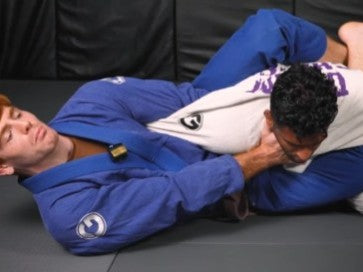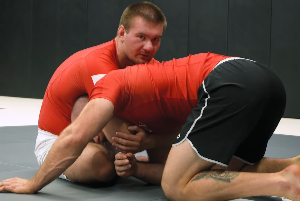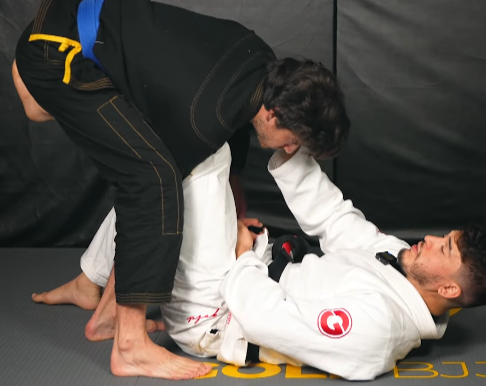Quick summary: The most reliable way to finish a straight ankle lock in BJJ is to use the middle of your forearm as the primary pressure point, maintain strong posture and keep your hands high. Small adjustments to body position make the hold much sharper and far harder for your opponent to escape.
Why the forearm — not the wrist

Placing the middle of your forearm across the opponent’s Achilles creates a narrow, cutting contact that forces the foot to rotate and the ankle to bend. Using the wrist alone can work sometimes, but it’s less efficient and less consistent. Think of the forearm as the blade: the more surface pressure and correct placement, the sharper the submission.
Step-by-step finish

To ace the perfect straight ankle lock, you must first learn the basics of this powerful move. Here are the practical cues that you can use for your guide.
- Secure the leg: Control the ankle and position yourself so the opponent’s foot is exposed and your thumbs/arms can wrap across the Achilles.
- Forearm placement: Lay the middle of your forearm across the Achilles (not the flat of the wrist). Aim for a single, narrow contact point — this concentrates pressure.
- Grip and hold across: Lock your hands so the forearm stays tight against the Achilles. Treat your grip like a clamping mechanism: tight and immovable.
- Posture control: Build posture — keep your chest up and hands high (near chest level). This stabilizes your base and prevents easy escapes. You can fall to finish, but posture is the safer, more effective initial strategy.
- Apply finish pressure: Sit back and drive your hips while maintaining the forearm contact. The forearm pressure + controlled hip movement forces the foot to turn and the ankle to extend into the lock.
- Tap awareness: Keep the pressure controlled; be ready to release as soon as your partner taps.
Common mistakes & how to fix them
When starting to learn a new move, it is normal to not perfect it right away. However, even the small and simple mistakes can even pull you further away to mastering it. So, here are some tips you can take notes of to prevent dragging your training and committing the common mistakes of beginners.
- Hands drop too low: If you let your hands fall, the finish becomes weak. Keep your hands high — chest level — to maintain leverage.
- Using the wrist as the main contact: This spreads the pressure and reduces effectiveness. Shift to the middle of the forearm for a sharper finish.
- Poor posture: Collapsing or leaving your chest too low makes the position unstable. Build posture first; only use a fall if you’re finishing from that movement.
- Loose forearm placement: If the forearm isn’t snug across the Achilles, the opponent can roll out. Clamp tightly and keep your forearm stationary.
Drills to make it muscle memory
Get ahold of the movements easily by training your body in moving the way it is needed. Here are some of the things you can take note of for your body to get used of this move.
- Slow placement reps: From a controlled position, repeatedly place the forearm on the Achilles and lock the grip — 3–5 seconds each, focusing on the contact point.
- Hand-height awareness: Drill keeping the hands at chest height while a partner offers light resistance — don’t let them pull your hands down.
- Finish from posture and fall: Practice both finishing from a strong posture and finishing by intentionally falling back. Train both so you can adapt during live rolling.
Short checklist before you attempt the finish
Guarantee a win against your opponent by making sure you do these things before your final blow.
- Middle of forearm across the Achilles — check.
- Hands locked and held high — check.
- Posture stable (or committed to the fall) — check.
- Controlled hip pressure while maintaining the clamp — check.
Final tip: Small changes in contact point and hand position make huge differences. Prioritize forearm placement and hand-height control — the submission becomes both sharper and more reliable.



